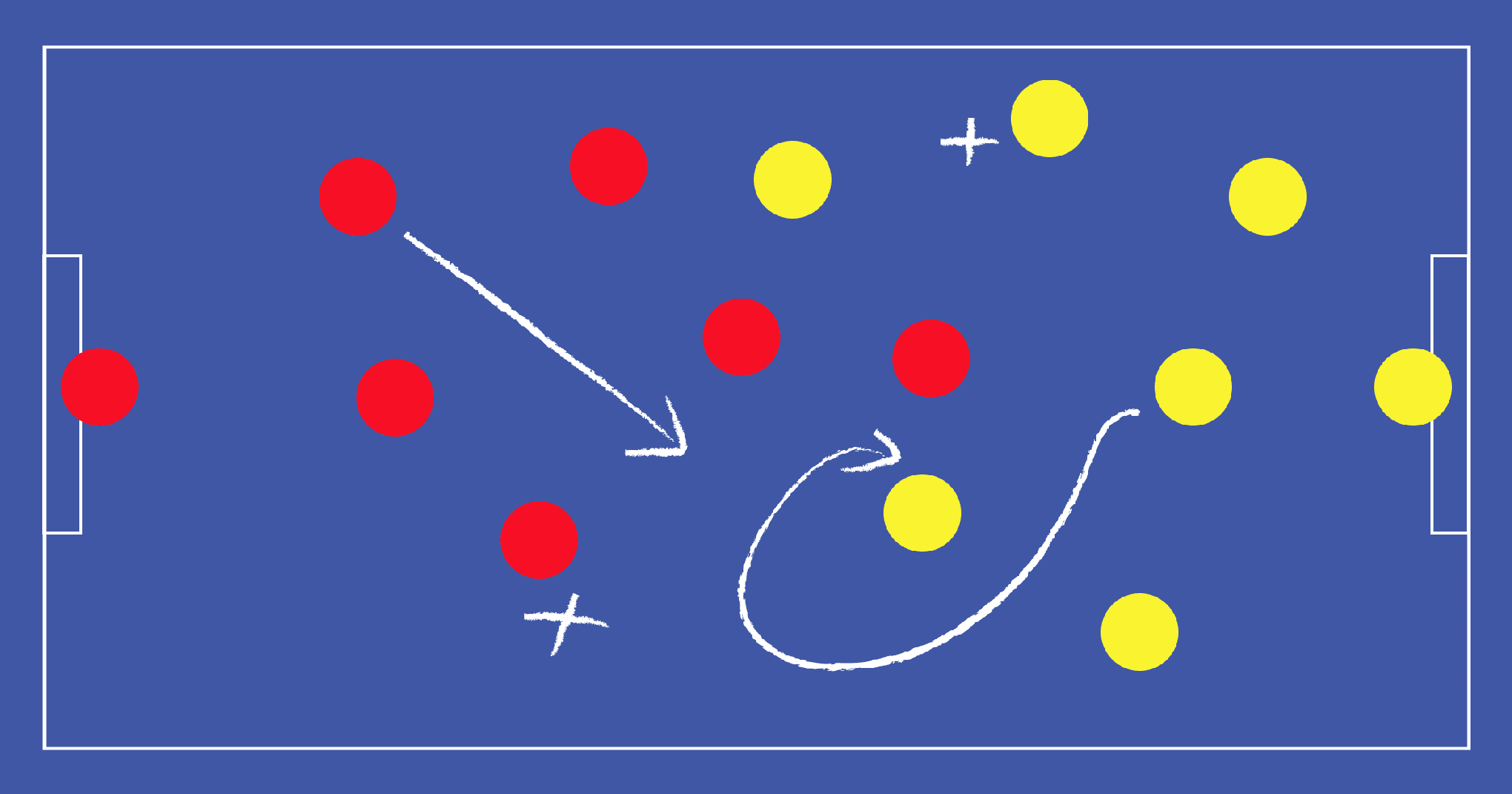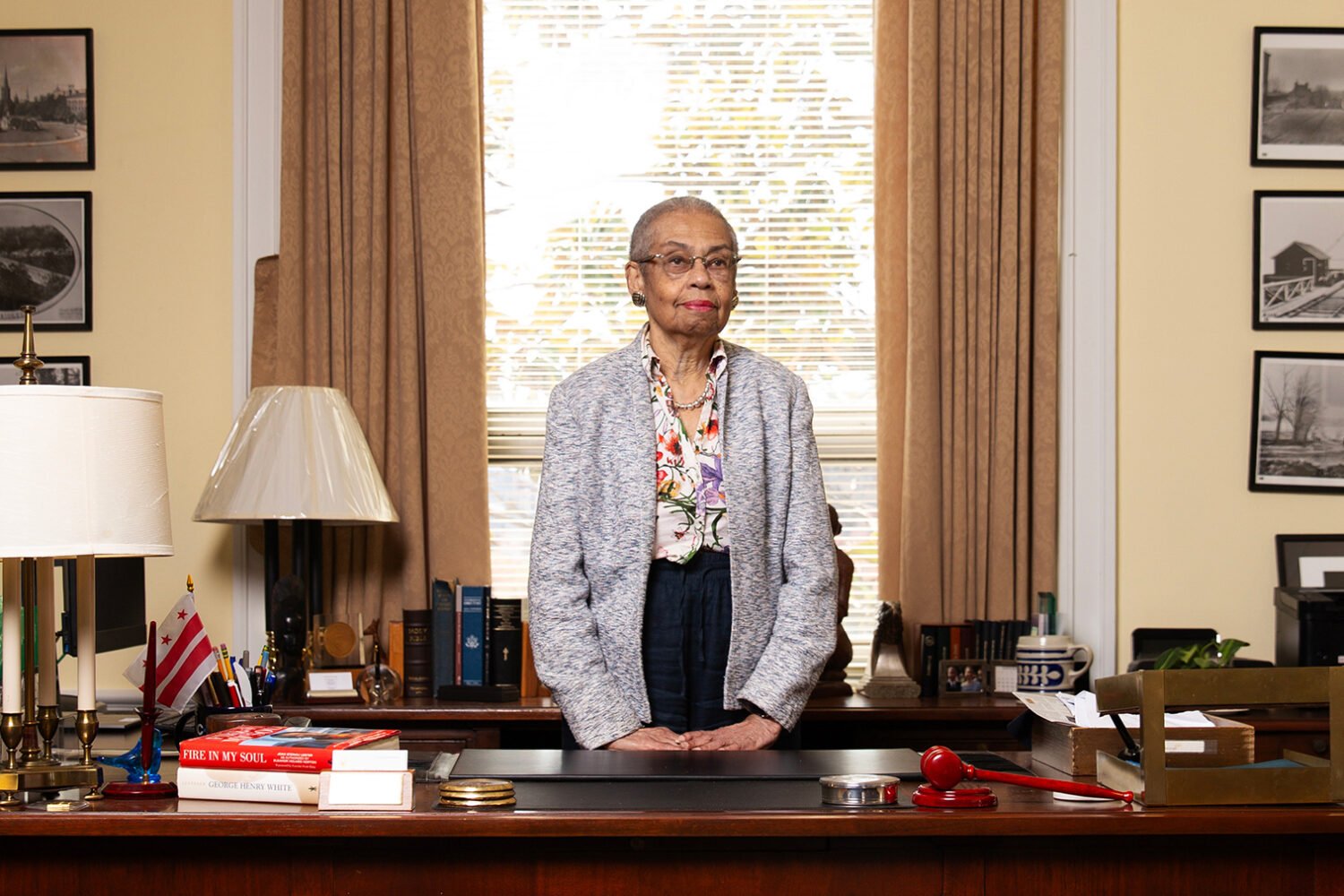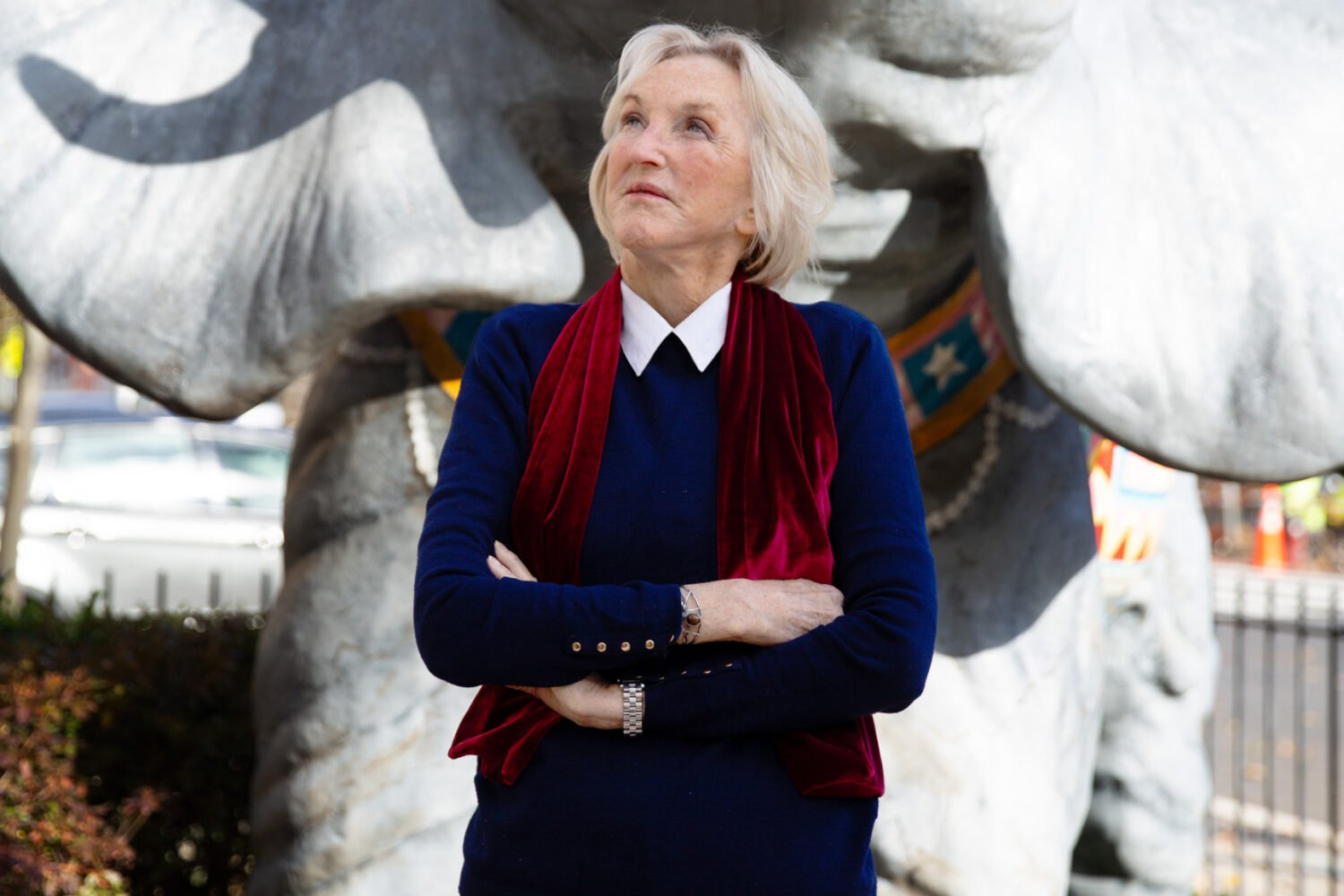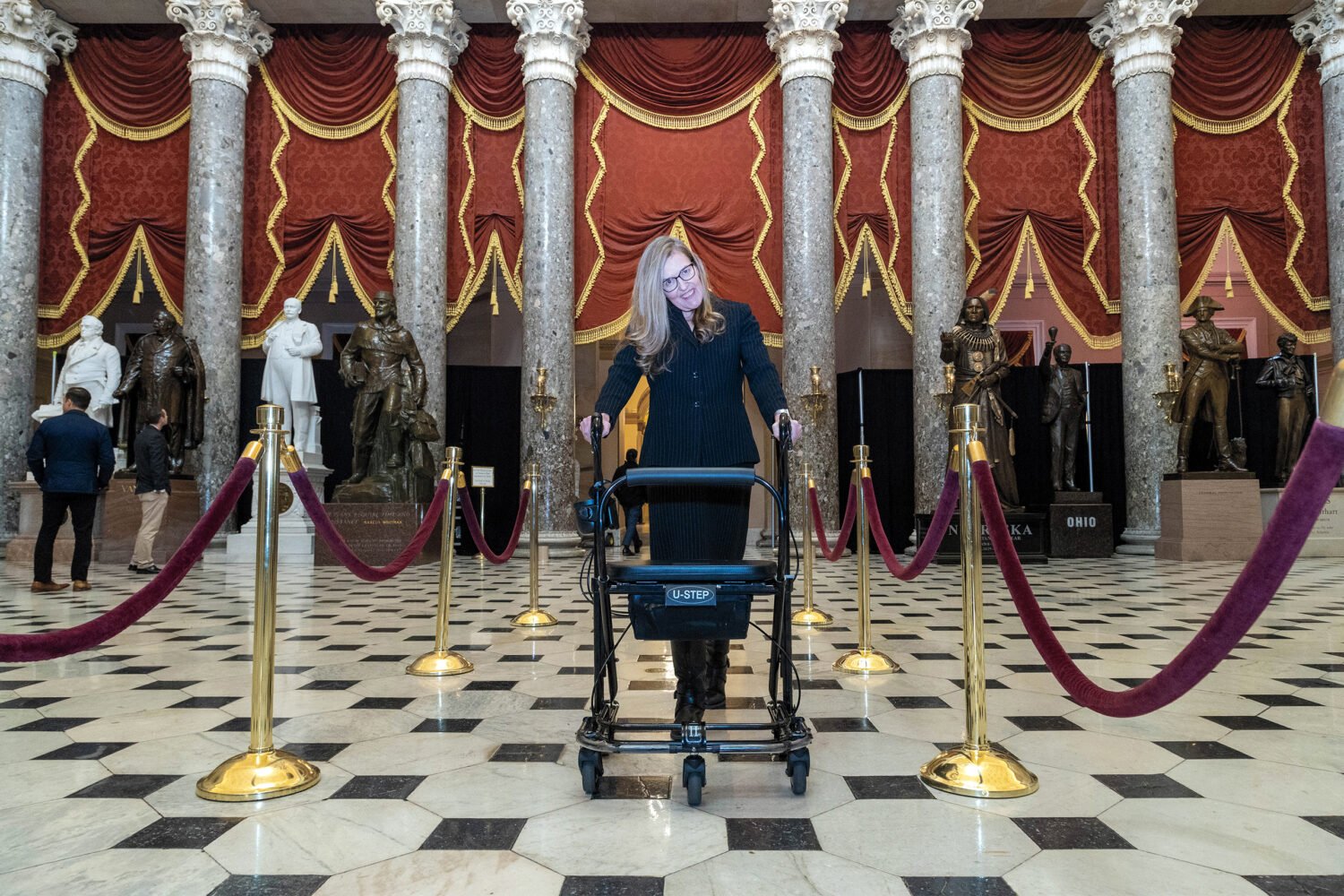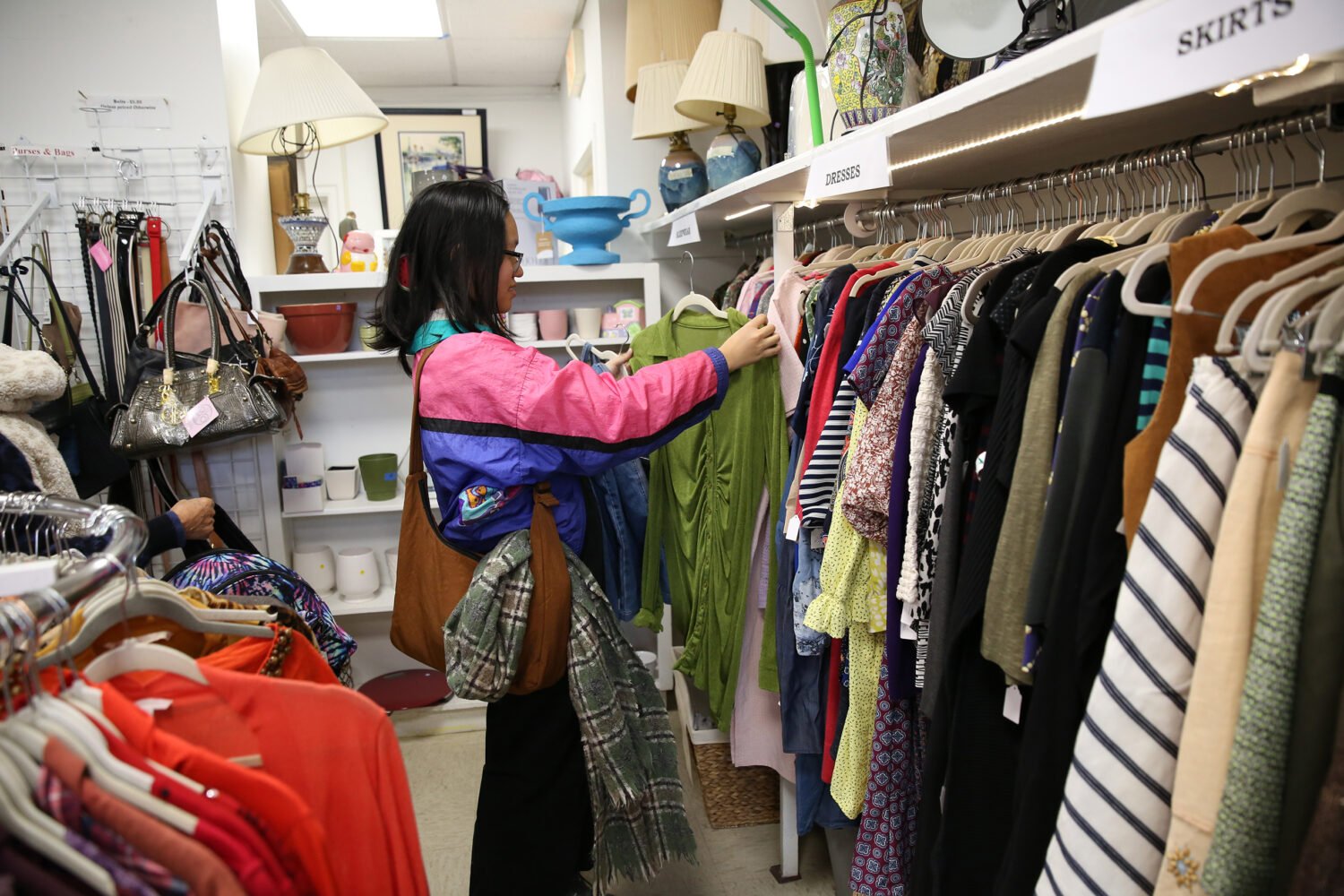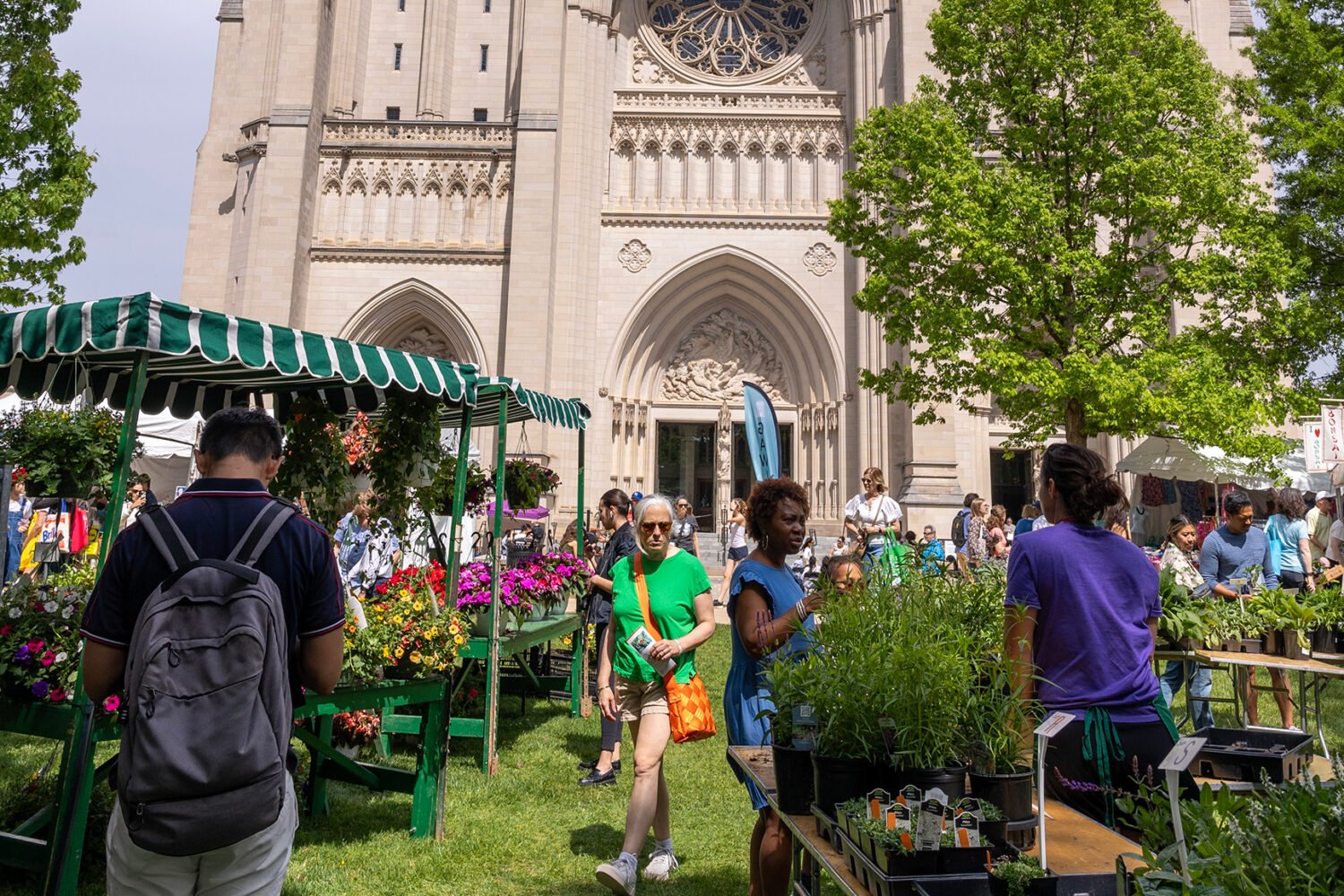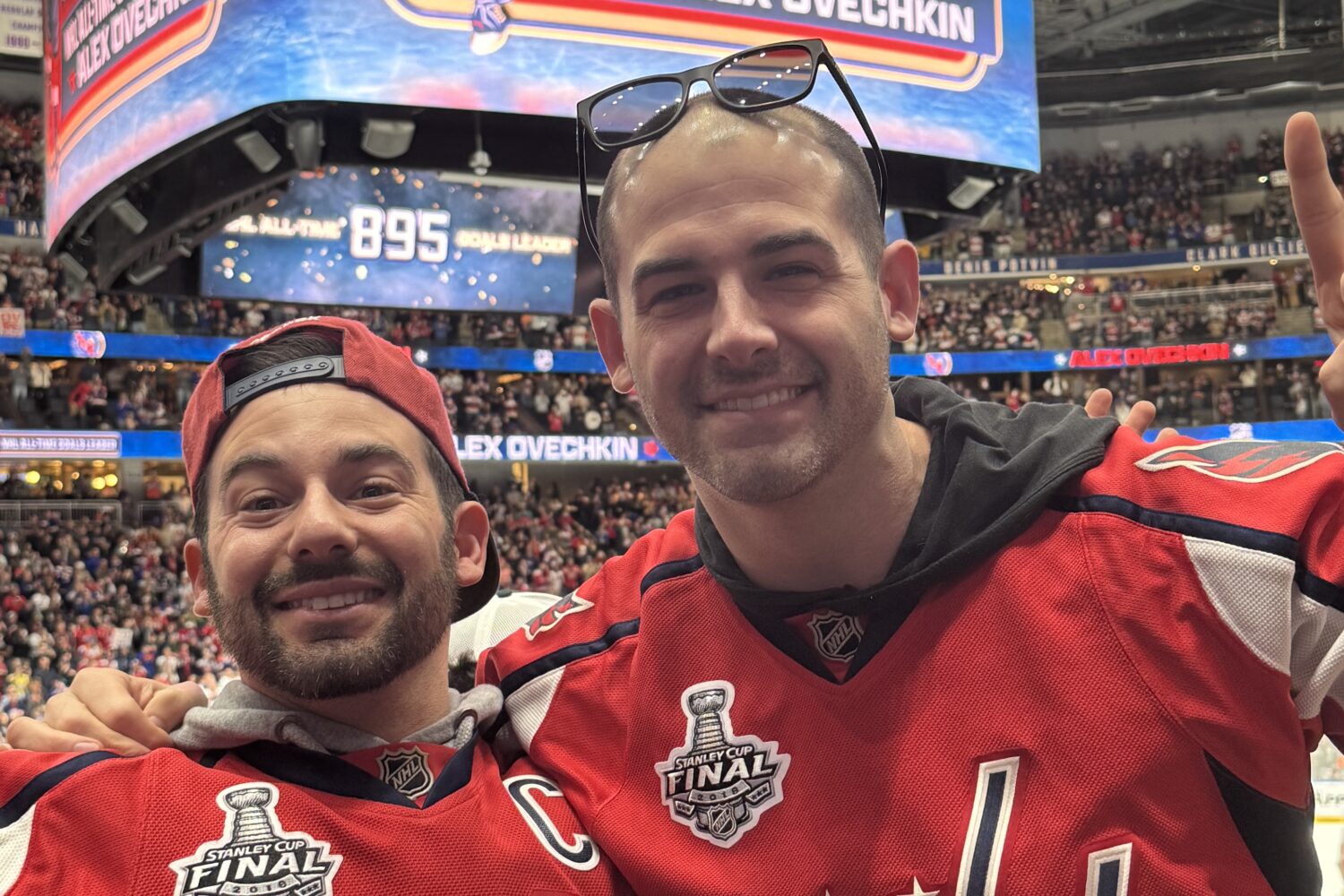Contents
All the Hype
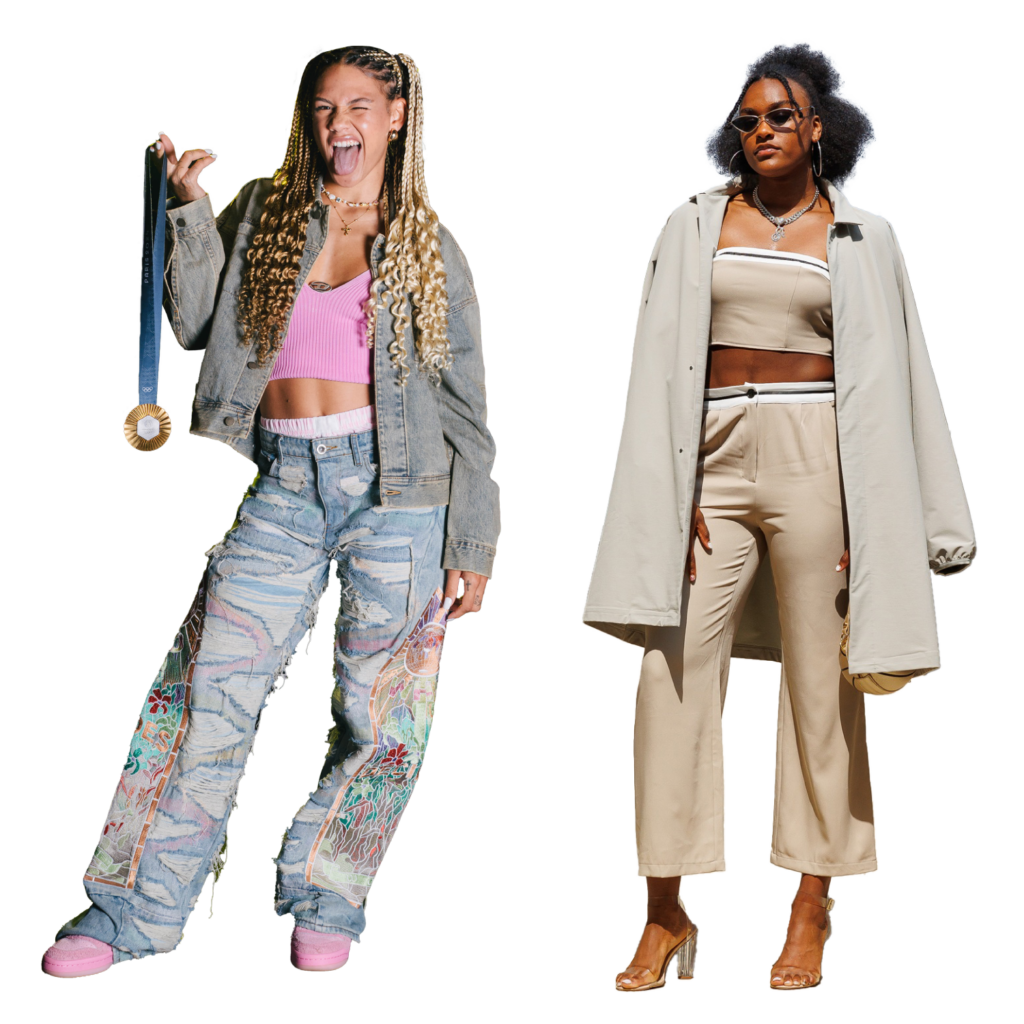
and Aaliyah Edwards from Washington Mystics. Photograph of Rodman courtesy of Washington Spirit. Photograph of Edwards by Kenny Giarla.
A long-established tradition in the NBA, the practice of dressing up before games has reached a fever pitch in the past few years. Although the intention isn’t necessarily to become a meme, as in Kuzma’s case, it does offer athletes a chance to express themselves through style, if only for a few minutes. While basketball players continue to up the ante with designer duds and sometimes—as with the pink sweater—over-the-top looks, athletes in other sports have kicked game-day walk-ins up a notch, too.
Fans aren’t there to see what players are wearing, but with photographers and camera crews on hand, the path to the locker room becomes a catwalk. (Last May, Harper’s Bazaar called the WNBA’s tunnel “the hottest runway of the year.”) Instagram accounts documenting the looks have amassed serious followings, including @leaguefits, with a million followers, and @nbafashionfits, with nearly half a million. Teams get in on the buzz, too: Last summer a Mystics post, captioned “Idk about you but we are so ready for tunnel fits again,” raffled off tickets to a game for followers who voted on their favorite looks from the previous month. Last fall, the NFL hired a fashion editor to reportedly help teams and players with styling and fashion-related social-media content. (The NFL has its own @NFLStyle account.) And in 2021, the Wizards began hosting a “Style Showcase” community-foundation fundraiser sponsored by Michelob Ultra.
“The tunnel gives you a really cool opportunity to showcase kind of who you are off the floor and give fans an insight to what you’re into,” says Wizards player Corey Kispert.
Just a month after Aaliyah Edwards’s debut with the Mystics, the first-round draft pick posted a carousel of pregame looks with the punny caption “Fitting in nicely.” In women’s soccer, the Washington Spirit’s Trinity Rodman—whose father, Dennis, is considered an early pioneer of the tradition—is another local athlete known for regularly dressing for the occasion.
Back to Top
How It Works
Some athletes, like Kispert, enlist the help of professional stylists—particularly in the NBA, where the bar is especially high.
About every two months, Kispert says, a stylist he’s worked with since joining the league comes to his home to sort through his closet and put together enough outfits for the next two months of games. “Then it’s up to me to shuffle through them and decide which ones I’m feeling from night to night,” he says. Kispert gravitates toward “super classic” styles, with brands including Boohoo and Paige for jeans and Brunello Cucinelli for suits. “I tend to be pretty conservative with what I wear, so she does a good job of pushing the limits and giving me stuff to think about and try that I might not otherwise.” He says the tunnel is reflective of what he’d wear out to dinner or for a special occasion.
Many athletes shop for and style themselves. Shatori Walker-Kimbrough, who was among Washingtonian’s 2023 Style Setters when she was with the Washington Mystics, said at the time that she enjoys buying vintage and secondhand. The Washington Commanders’ Austin Ekeler gets some help from his wife, Melanie Wilking, whose Instagram account (with 650,000 followers) walks through the styling of his game-day looks each week.
Back to TopTrickle-Down Effect
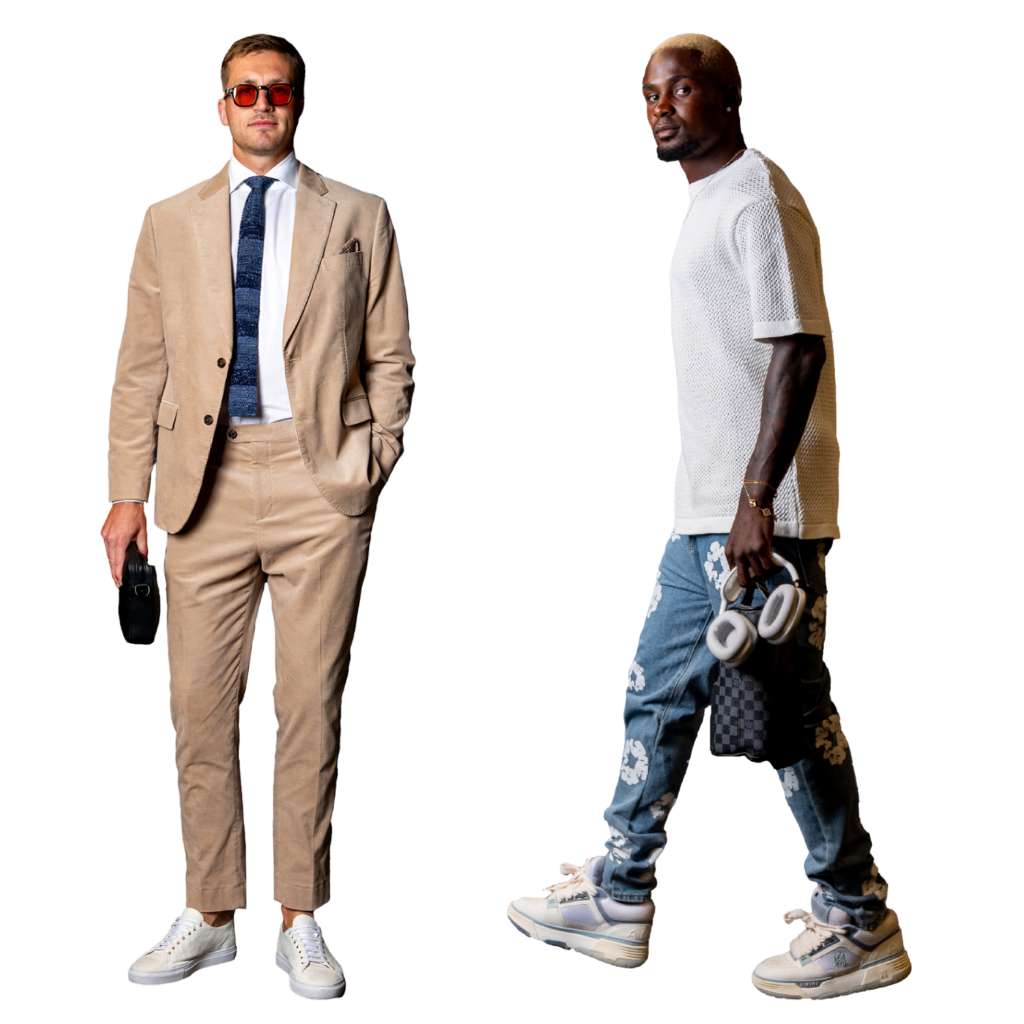
The fashion focus has led to elevated fan merch, too. Last spring, DC United partnered with local retailer the Museum DC for a collection of new fanwear, and the Washington Spirit hired designer Domo Wells as its first-ever creative director and designer. The team unveiled her fall merchandise collection on Instagram with an announcement and photos of players wearing the pieces in the tunnel. Also last spring, Washington Wizard Jordan Poole collaborated with DC artist Chris Pyrate to design a jacket that he wore in the tunnel and that was sold at the team store at Capital One Arena.
Poole, says Kispert, is the teammate whose styles he most looks forward to seeing: “I really admire the way Jordan does his stuff. He is very uniquely him. He doesn’t get out of his lane, but he does what he does really well. I look up to and look forward [to seeing] what he does from game to game.”
Back to Top
Rules of the Pregame
Though the NBA recently did away with a controversial 2005 business-casual dress code—which some say unintentionally spurred the type of pregame styles we see today—other organizations require players to follow an even stricter set of rules. Capitals players, for instance, are required to wear suits when they arrive to games. That leaves less room for expression, but some of the more fashion-savvy Caps can be spotted with chic accessories, trendy tailoring, bolder styles, and other intentional details. Dylan Strome is known for wearing suits with custom jackets that feature photos of his kids and dogs on the inside.
But how Strome dresses has less to do with style than with luck. He usually chooses his looks based on “a little bit of superstition,” factoring in what he wore last and how the game went. “Things have been going pretty well this year,” he says—and he’s had the same beanie on repeat. When he does need to change it up, his daughter usually gets to choose what he wears next.
Asked who’s the most fashionable on his team, Strome points to Rasmus Sandin and Aliaksei Protas: “The Europeans got a pretty good style.” Occasionally, the Caps relax their dress code—as on one game day in January when the players were allowed to wear Commanders gear to show their support just hours before the Commanders faced the Lions in the playoffs. The Nats have also worn jerseys of their favorite NFL teams in the tunnel, and dressed for other themes, but their arrival looks are generally more casual than other DC teams.
Back to Top
The Luxury Influence
Designer labels aren’t new among pro athletes, but luxury brands do seem to be showing up more and more. Last year alone, David Yurman tapped the Wizards’ Kuzma, along with several other NBA players, to wear the brand’s jewelry; LVMH, which includes such luxury brands as Louis Vuitton and Dior, was an official partner of the Paris Olympics; Prada dressed Caitlin Clark for the WNBA draft; and two NFL quarterbacks—the Chiefs’ Patrick Mahomes and the Steelers’ Russell Wilson—became the latest NFL quarterbacks to give Louis Vuitton bags to their teammates as gifts. (In other designer-gifting-in-the-NFL last year, the Jets’ Aaron Rodgers gave everyone on his offensive line custom Tom Ford suits, and the Cardinals’ Kyler Murray presented his offensive linemen with Goyard bags. Rolexes have also been a popular gift among the athletes.)
Vuitton bags are all over the Commanders’ walk-in, carried by Jayden Daniels, Terry McLaurin, and Jeremy Reaves, to name a few. Bobby Wagner and Mike Sainristil, also known for their style, have carried duffels by Gucci and Celine, respectively. The bags that Zach Ertz—another fashionable Commander—carries are generally less conspicuous than the white Beats headphones he’s rarely seen without, which he pairs with colorful suits, plaid pants, and other on-trend apparel.
Back to Top
A Tipping Point
You could see how it could become too much. At the start of the 2024–25 season last October, Kuzma—who’d been notable in the league for his often extravagant game-day style—told Vogue he was retiring from the practice and returning to simple pregame sweatsuits, citing the commercialization and the pressure it puts on young players. “I can speak from experience that when you’re a younger player, you don’t want to wear the same thing twice,” Kuzma said. “A lot of times we get played into thinking, ‘Oh, we gotta switch it up, we gotta buy something new.’ And now we’re just buying clothes to impress people or to stand out. It’s ludicrous.”
There’s no doubt some of these players are inundated with free clothing that smaller brands hope will see the spotlight. Kispert—who says only a very small number of the things he dons in the tunnel are worn as “favors or business opportunities”—notes that for some companies, having players sport their stuff “goes a long way.” But generally, it’s hard to know whether athletes are getting their higher-end clothing comped, footing the sizable bills, or something in between.
To wit: In 2016, Russell Westbrook reportedly scoffed when it was suggested that he paid nearly $300,000 for a season’s worth of outfits, stating, “I don’t even pay for a lot of my clothes.” But four years later, in an interview with GQ, Westbrook estimated that James Harden—the two are among the NBA’s top dressers—spends “half a mil, minimum” per year on clothes. (And, reciprocally, Harden estimated that Westbrook spends upward of $350,000.) Yes, these athletes make a lot of money—this year in the NBA, the first-year player-league minimum is a little more than $1.1 million—but with 82 games a season, the cost can add up. Another cost: all the time and energy.
Kispert says he’s able to approach dressing for game days in a way that helps him avoid a lot of that: “There is pressure, but for me, I don’t really feel it much. I’m not in the same category as a lot of other players in the NBA who are in fashion shows or wearing the latest and greatest stuff. I just want to be me and present myself the best as I walk in the tunnel. I don’t really compare myself to other people. I’m just trying to wear what I feel great in and wear what I think looks really good.”
When then–Washington Wizard Kyle Kuzma walked into Capital One Arena in November 2021 wearing a dramatically oversize pink cable-knit sweater by Raf Simons, the response was swift. As images circulated on social media, fellow NBA players from teams across the country weighed in, and for months Kuzma’s sartorial choice became fodder for media outlets including the Washington Post and GQ—the reaction was mixed at best. More than a year later, in January 2023, it was still such a part of the conversation that at a game against the Knicks, the Wizards gave away a bobblehead of Kuzma wearing the sweater. (He was recently traded to the Milwaukee Bucks—where he might need the sweater.)
Such is the not totally unintended effect of the “tunnel fit”—a pregame outfit worn by a pro athlete. Here’s a look at the phenomenon.
Back to Top
All the Hype
A long-established tradition in the NBA, the practice of dressing up before games has reached a fever pitch in the past few years. Although the intention isn’t necessarily to become a meme, as in Kuzma’s case, it does offer athletes a chance to express themselves through style, if only for a few minutes. While basketball players continue to up the ante with designer duds and sometimes—as with the pink sweater—over-the-top looks, athletes in other sports have kicked game-day walk-ins up a notch, too.

and Aaliyah Edwards from Washington Mystics. Photograph of Rodman courtesy of Washington Spirit. Photograph of Edwards by Kenny Giarla.
Fans aren’t there to see what players are wearing, but with photographers and camera crews on hand, the path to the locker room becomes a catwalk. (Last May, Harper’s Bazaar called the WNBA’s tunnel “the hottest runway of the year.”) Instagram accounts documenting the looks have amassed serious followings, including @leaguefits, with a million followers, and @nbafashionfits, with nearly half a million. Teams get in on the buzz, too: Last summer a Mystics post, captioned “Idk about you but we are so ready for tunnel fits again,” raffled off tickets to a game for followers who voted on their favorite looks from the previous month. Last fall, the NFL hired a fashion editor to reportedly help teams and players with styling and fashion-related social-media content. (The NFL has its own @NFLStyle account.) And in 2021, the Wizards began hosting a “Style Showcase” community-foundation fundraiser sponsored by Michelob Ultra.
“The tunnel gives you a really cool opportunity to showcase kind of who you are off the floor and give fans an insight to what you’re into,” says Wizards player Corey Kispert.
Just a month after Aaliyah Edwards’s debut with the Mystics, the first-round draft pick posted a carousel of pregame looks with the punny caption “Fitting in nicely.” In women’s soccer, the Washington Spirit’s Trinity Rodman—whose father, Dennis, is considered an early pioneer of the tradition—is another local athlete known for regularly dressing for the occasion.
Back to Top
How It Works
Some athletes, like Kispert, enlist the help of professional stylists—particularly in the NBA, where the bar is especially high.
About every two months, Kispert says, a stylist he’s worked with since joining the league comes to his home to sort through his closet and put together enough outfits for the next two months of games. “Then it’s up to me to shuffle through them and decide which ones I’m feeling from night to night,” he says. Kispert gravitates toward “super classic” styles, with brands including Boohoo and Paige for jeans and Brunello Cucinelli for suits. “I tend to be pretty conservative with what I wear, so she does a good job of pushing the limits and giving me stuff to think about and try that I might not otherwise.” He says the tunnel is reflective of what he’d wear out to dinner or for a special occasion.
Many athletes shop for and style themselves. Shatori Walker-Kimbrough, who was among Washingtonian’s 2023 Style Setters when she was with the Washington Mystics, said at the time that she enjoys buying vintage and secondhand. The Washington Commanders’ Austin Ekeler gets some help from his wife, Melanie Wilking, whose Instagram account (with 650,000 followers) walks through the styling of his game-day looks each week.

Trickle-Down Effect
The fashion focus has led to elevated fan merch, too. Last spring, DC United partnered with local retailer the Museum DC for a collection of new fanwear, and the Washington Spirit hired designer Domo Wells as its first-ever creative director and designer. The team unveiled her fall merchandise collection on Instagram with an announcement and photos of players wearing the pieces in the tunnel. Also last spring, Washington Wizard Jordan Poole collaborated with DC artist Chris Pyrate to design a jacket that he wore in the tunnel and that was sold at the team store at Capital One Arena.
Poole, says Kispert, is the teammate whose styles he most looks forward to seeing: “I really admire the way Jordan does his stuff. He is very uniquely him. He doesn’t get out of his lane, but he does what he does really well. I look up to and look forward [to seeing] what he does from game to game.”
Back to Top
Rules of the Pregame
Though the NBA recently did away with a controversial 2005 business-casual dress code—which some say unintentionally spurred the type of pregame styles we see today—other organizations require players to follow an even stricter set of rules. Capitals players, for instance, are required to wear suits when they arrive to games. That leaves less room for expression, but some of the more fashion-savvy Caps can be spotted with chic accessories, trendy tailoring, bolder styles, and other intentional details. Dylan Strome is known for wearing suits with custom jackets that feature photos of his kids and dogs on the inside.
But how Strome dresses has less to do with style than with luck. He usually chooses his looks based on “a little bit of superstition,” factoring in what he wore last and how the game went. “Things have been going pretty well this year,” he says—and he’s had the same beanie on repeat. When he does need to change it up, his daughter usually gets to choose what he wears next.
Asked who’s the most fashionable on his team, Strome points to Rasmus Sandin and Aliaksei Protas: “The Europeans got a pretty good style.” Occasionally, the Caps relax their dress code—as on one game day in January when the players were allowed to wear Commanders gear to show their support just hours before the Commanders faced the Lions in the playoffs. The Nats have also worn jerseys of their favorite NFL teams in the tunnel, and dressed for other themes, but their arrival looks are generally more casual than other DC teams.
Back to Top
The Luxury Influence
Designer labels aren’t new among pro athletes, but luxury brands do seem to be showing up more and more. Last year alone, David Yurman tapped the Wizards’ Kuzma, along with several other NBA players, to wear the brand’s jewelry; LVMH, which includes such luxury brands as Louis Vuitton and Dior, was an official partner of the Paris Olympics; Prada dressed Caitlin Clark for the WNBA draft; and two NFL quarterbacks—the Chiefs’ Patrick Mahomes and the Steelers’ Russell Wilson—became the latest NFL quarterbacks to give Louis Vuitton bags to their teammates as gifts. (In other designer-gifting-in-the-NFL last year, the Jets’ Aaron Rodgers gave everyone on his offensive line custom Tom Ford suits, and the Cardinals’ Kyler Murray presented his offensive linemen with Goyard bags. Rolexes have also been a popular gift among the athletes.)
Vuitton bags are all over the Commanders’ walk-in, carried by Jayden Daniels, Terry McLaurin, and Jeremy Reaves, to name a few. Bobby Wagner and Mike Sainristil, also known for their style, have carried duffels by Gucci and Celine, respectively. The bags that Zach Ertz—another fashionable Commander—carries are generally less conspicuous than the white Beats headphones he’s rarely seen without, which he pairs with colorful suits, plaid pants, and other on-trend apparel.
Back to Top
A Tipping Point
You could see how it could become too much. At the start of the 2024–25 season last October, Kuzma—who’d been notable in the league for his often extravagant game-day style—told Vogue he was retiring from the practice and returning to simple pregame sweatsuits, citing the commercialization and the pressure it puts on young players. “I can speak from experience that when you’re a younger player, you don’t want to wear the same thing twice,” Kuzma said. “A lot of times we get played into thinking, ‘Oh, we gotta switch it up, we gotta buy something new.’ And now we’re just buying clothes to impress people or to stand out. It’s ludicrous.”
There’s no doubt some of these players are inundated with free clothing that smaller brands hope will see the spotlight. Kispert—who says only a very small number of the things he dons in the tunnel are worn as “favors or business opportunities”—notes that for some companies, having players sport their stuff “goes a long way.” But generally, it’s hard to know whether athletes are getting their higher-end clothing comped, footing the sizable bills, or something in between.
To wit: In 2016, Russell Westbrook reportedly scoffed when it was suggested that he paid nearly $300,000 for a season’s worth of outfits, stating, “I don’t even pay for a lot of my clothes.” But four years later, in an interview with GQ, Westbrook estimated that James Harden—the two are among the NBA’s top dressers—spends “half a mil, minimum” per year on clothes. (And, reciprocally, Harden estimated that Westbrook spends upward of $350,000.) Yes, these athletes make a lot of money—this year in the NBA, the first-year player-league minimum is a little more than $1.1 million—but with 82 games a season, the cost can add up. Another cost: all the time and energy.
Kispert says he’s able to approach dressing for game days in a way that helps him avoid a lot of that: “There is pressure, but for me, I don’t really feel it much. I’m not in the same category as a lot of other players in the NBA who are in fashion shows or wearing the latest and greatest stuff. I just want to be me and present myself the best as I walk in the tunnel. I don’t really compare myself to other people. I’m just trying to wear what I feel great in and wear what I think looks really good.”
Left to right: Corey Kispert Washington Wizards, Croix Bethune Washington Spirit, Trinity Rodman Washington Spirit, Jordan Poole Washington Wizards, Stefanie Dolson Washington Mystics. Photographs by Kenny Giarla, Brianna Biorato, and courtesy of Washington Spirit.
This article appears in the March 2025 issue of Washingtonian.
